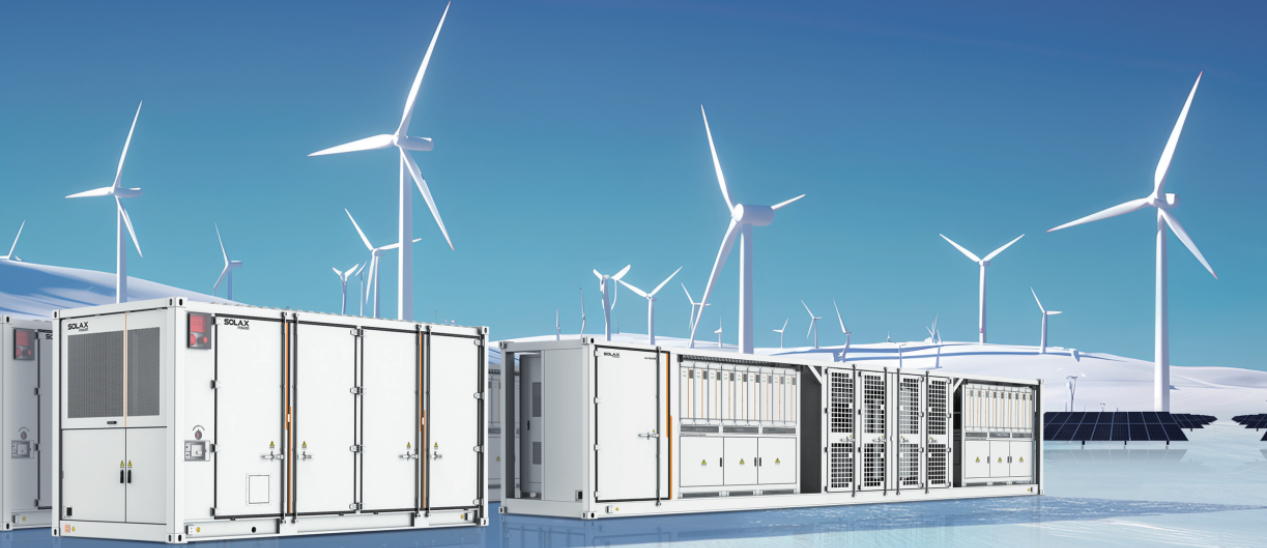Energy storage has become a vital component of the renewable energy landscape, offering businesses and utilities a way to optimize energy usage, improve grid stability, and reduce reliance on fossil fuels. Among the different types of energy storage systems, Commercial and Industrial (C&I) Energy Storage and Utility-Scale Energy Storage are two prominent solutions. Both serve different purposes, tailored for distinct scales of application. In this article, we will explore the key differences between these two types of energy storage systems, their components, costs, and adoption trends, with a focus on SolaX's cutting-edge solar and energy storage solutions designed to simplify the transition to clean energy for businesses of all sizes.
While both C&I and utility-scale energy storage systems store excess energy for later use, the scale, application, and technical specifications of these systems differ significantly. Understanding these differences can help to make informed decisions about which solution best meets their needs.


C&I energy storage systems are typically designed for small to medium-sized enterprises (SMEs), including retail stores, factories, offices, and hospitals. These systems usually have lower energy storage capacities (from a few kilowatt-hours to a few hundred kilowatt-hours) and are optimized for shorter-term energy storage and peak demand shaving.
On the other hand, utility-scale energy storage systems are built to store much larger quantities of energy—ranging from several megawatt-hours (MWh) to gigawatt-hours (GWh)—and are primarily used for grid stabilization, balancing supply and demand across entire regions, and supporting renewable energy integration at a larger scale.
C&I energy storage systems are often applied for reducing electricity costs, increasing energy efficiency, and providing backup power in case of grid failure. The systems are particularly useful for businesses that have high energy consumption during peak hours and want to offset these costs by storing energy during off-peak times.
Utility-scale energy storage systems are used for large-scale grid management purposes. They play a critical role in supporting the integration of intermittent renewable energy sources like wind and solar power into the grid. Additionally, they are used for frequency regulation, load shifting, and even emergency backup for entire regions or cities.
Both C&I and utility-scale energy storage systems have similar core components, but they differ in size, complexity, and design.
Battery
The core of any energy storage system, the battery stores energy for later use. C&I systems typically use lithium-ion or lead-acid batteries, while utility-scale systems often incorporate larger, more specialized battery types, such as flow batteries or large-scale lithium-ion systems.
Battery Management System (BMS)
The BMS monitors the health, temperature, and charge levels of the battery, ensuring safe and optimal performance.
Power Control System (PCS)
The PCS manages the flow of electricity between the battery, the grid, and other components of the system.
Energy Management System (EMS)
The EMS controls and optimizes energy flow within the system. It helps businesses and utilities decide when to charge and discharge the battery based on real-time energy prices, demand forecasts, and other factors.
SolaX's commercial and industrial (C&I) energy storage solutions are designed with these components to offer seamless integration with solar photovoltaic (PV) systems, providing reliable and cost-effective energy management for businesses. SolaX's systems can store solar energy during the day for use at night, lowering their dependence on grid electricity and reducing their energy costs.
Commercial and industrial energy storage systems typically have lower initial costs than utility-scale systems due to their smaller size and simpler infrastructure. However, their cost per unit of energy stored tends to be higher than utility-scale systems, as the economies of scale are not as prominent.
Utility-scale systems require significant investment in infrastructure, as well as larger-scale batteries, transformers, and control systems. Although the upfront costs are higher, these systems benefit from lower costs per unit of energy stored due to economies of scale.
The ROI (Return on Investment) for C&I energy storage systems can be realized through reduced electricity bills, enhanced energy independence, and the ability to avoid peak demand charges. In comparison, utility-scale systems generate returns primarily through grid services and the ability to store large volumes of renewable energy.
The adoption of C&I energy storage solutions has been growing rapidly, especially as businesses look for ways to reduce their energy costs and improve sustainability. With the global shift toward renewable energy and carbon reduction goals, the demand for efficient and scalable C&I solutions like SolaX has never been greater. Businesses across sectors—such as retail, manufacturing, healthcare, and education—are investing in solar and energy storage to secure a more resilient and sustainable future.
Utility-scale energy storage has seen slower adoption, primarily due to the large-scale investment required. However, as more governments and utilities push for carbon reduction and renewable energy targets, the demand for utility-scale energy storage is expected to rise significantly.
| Feature | C&I Energy Storage | Utility-Scale Energy Storage |
| Scale of Application | Small to medium-sized businesses (e.g., offices, factories) | Large-scale grids, regions, or cities |
| Storage Capacity | A few kWh to hundreds of kWh | Several MWh to GWh |
| Primary Applications | Cost optimization, peak demand shaving, backup power | Grid stability, renewable energy integration |
| Investment Cost | Lower initial cost, suitable for small businesses | Higher investment, suited for large-scale projects |
| Cost per Unit | Higher per unit of energy stored | Lower per unit, benefits from economies of scale |
When deciding between C&I energy storage and utility-scale energy storage, several factors should be considered:
Energy consumption: Businesses with moderate energy consumption may find C&I systems sufficient for their needs. Larger-scale operations or utilities requiring massive energy storage capacities would be better suited for utility-scale solutions.
System size: C&I systems are generally smaller and more modular, making them easier to install and scale over time. Utility-scale systems, on the other hand, require more complex planning and investment.
Budget: While C&I systems are more affordable upfront, utility-scale systems can offer better long-term economics due to the larger scale and the potential for grid services.
SolaX is at the forefront of delivering reliable C&I solutions, designed to support businesses as they transition to cleaner, more sustainable energy. By integrating solar photovoltaic systems with advanced energy storage solutions, SolaX helps businesses optimize energy usage, reduce operational costs, and lower carbon emissions.
For enterprises across various sectors, including retail, manufacturing, healthcare, and office buildings, SolaX's C&I PV and energy storage solutions provide a seamless way to harness the power of the sun, store excess energy, and achieve better investment returns. Whether it's reducing energy costs during peak demand hours or ensuring backup power during grid failures, SolaX offers custom systems tailored to meet the unique needs of each business.
For larger-scale operations, SolaX also offers containerized energy storage system that contribute to grid stability and renewable energy integration, playing a critical role in creating a sustainable energy future.